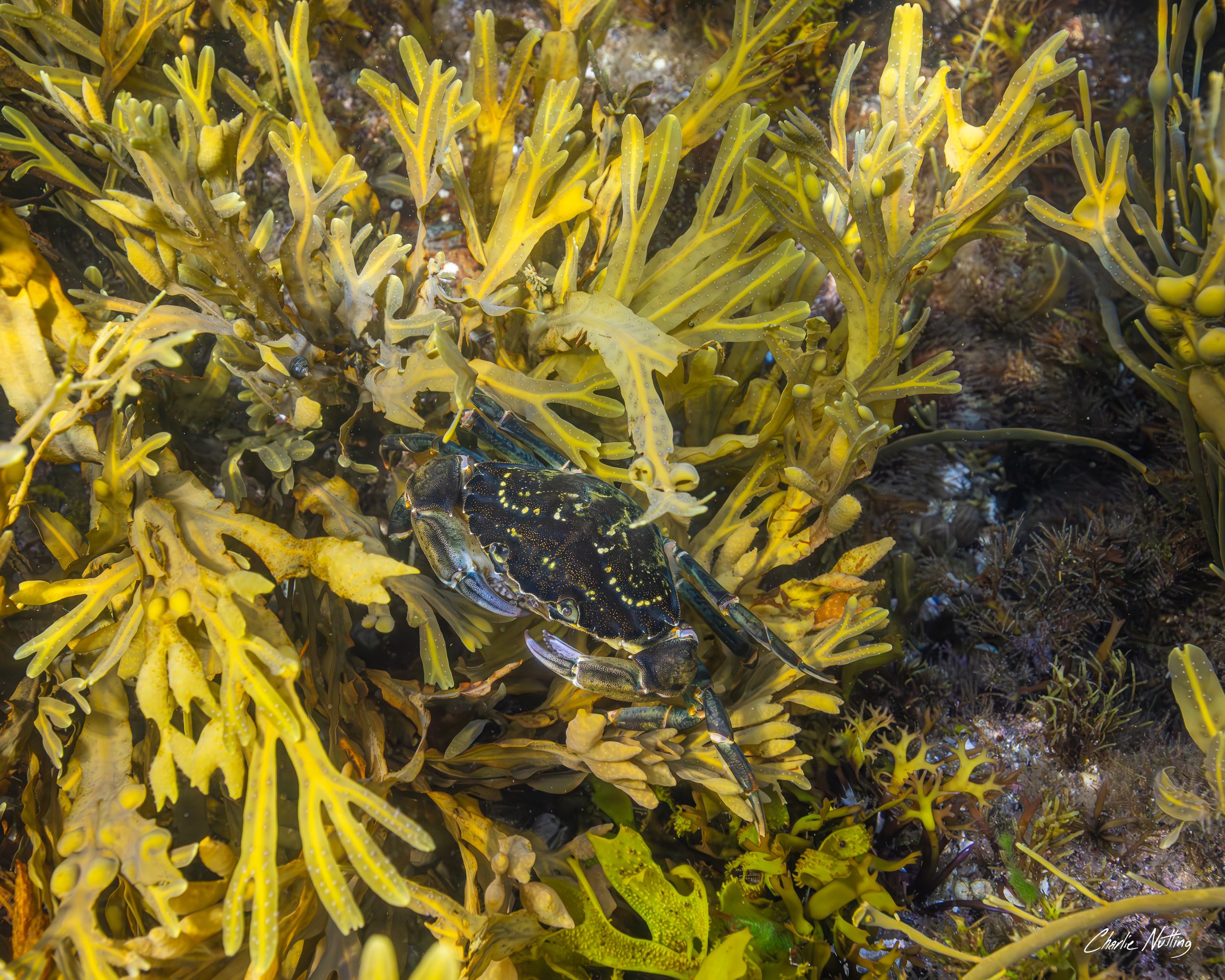 Image 1 of 1
Image 1 of 1


Adopt an Tide Pool - Print
Adopt a tide pool and receive a signed limited edition 8" x 10" print of this striking image from a Monhegan Island tide pool shot by photographer Charlie Nutting.
For many people, the first time they ever see an invasive green crab is in a tide pool. Lifting up rocks and moving around seaweed, you can often find tiny green crabs in a hue of bright green, brown, or tan, often no larger than a quarter. Tide pools provide a sheltered environment for young green crabs where they can avoid waves and predators and feed on small invertebrates including clams, oysters, scallops, limpets, mussels, and starfish. However, when the tide goes out and access to flowing water ceases, these environments can be very harsh and lead to changes in dissolved oxygen and temperature changes. The adaptive invasive green crab copes by hiding in seaweed. Even in its earliest years, it manages to make the tide pool its own personal feeding ground, dominating over other species.
About the Artist: @charlielikeswater , has amassed an impressive library of work over the past decade, documenting life in New England above & below the surface--from people to wildlife & many things in between. Have a look at his page & follow along to see New England through his eyes.
Each adoption kit includes:
A signed, limited edition 8” x 10” print
An adoption certificate
An informational card highlighting green crab’s impact on intertidal ecosystems
All proceeds from our adoption program support GreenCrab.org’s efforts to highlight species and ecosystems impacted by invasive green crab, sharing the work of researchers across the globe. GreenCrab.org is a nonprofit that builds culinary markets for European green crab and spreads awareness of its invasive impact
Adopt a tide pool and receive a signed limited edition 8" x 10" print of this striking image from a Monhegan Island tide pool shot by photographer Charlie Nutting.
For many people, the first time they ever see an invasive green crab is in a tide pool. Lifting up rocks and moving around seaweed, you can often find tiny green crabs in a hue of bright green, brown, or tan, often no larger than a quarter. Tide pools provide a sheltered environment for young green crabs where they can avoid waves and predators and feed on small invertebrates including clams, oysters, scallops, limpets, mussels, and starfish. However, when the tide goes out and access to flowing water ceases, these environments can be very harsh and lead to changes in dissolved oxygen and temperature changes. The adaptive invasive green crab copes by hiding in seaweed. Even in its earliest years, it manages to make the tide pool its own personal feeding ground, dominating over other species.
About the Artist: @charlielikeswater , has amassed an impressive library of work over the past decade, documenting life in New England above & below the surface--from people to wildlife & many things in between. Have a look at his page & follow along to see New England through his eyes.
Each adoption kit includes:
A signed, limited edition 8” x 10” print
An adoption certificate
An informational card highlighting green crab’s impact on intertidal ecosystems
All proceeds from our adoption program support GreenCrab.org’s efforts to highlight species and ecosystems impacted by invasive green crab, sharing the work of researchers across the globe. GreenCrab.org is a nonprofit that builds culinary markets for European green crab and spreads awareness of its invasive impact
